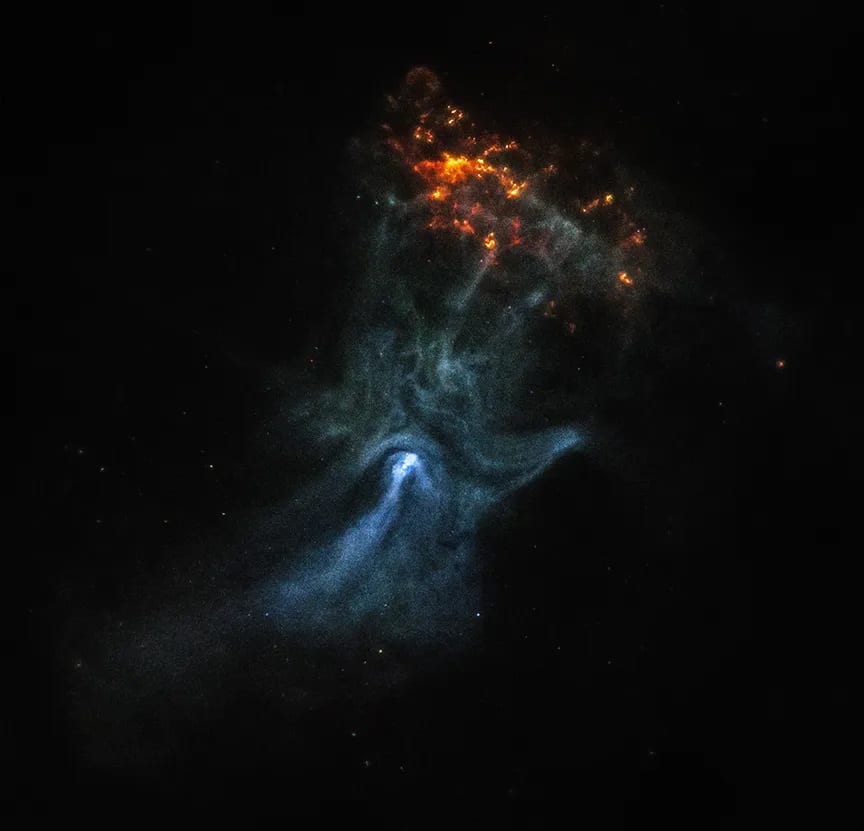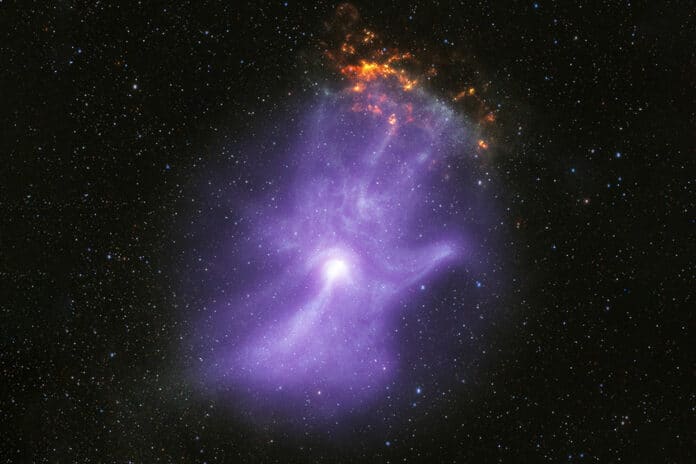Two of NASA’s X-ray space telescopes unveiled the magnetic field “bones” of a remarkable hand-shaped structure in space. This ghostly cosmic hand lives on through plumes of particles of energized matter and antimatter.
When the pulsar PSR B1509-58 was initially spotted in 2001, NASA’s Chandra X-ray Observatory discovered that the pulsar wind nebula, also known as MSH 15-52, had a hand-like appearance. The pulsar is situated at the nebula’s “palm’s” base. The distance between MSH 15-52 and Earth is 16,000 light-years.
The Imaging X-ray Polarimetry Explorer (IXPE), the newest X-ray telescope operated by NASA, has now monitored MSH 15-52 for around 17 days, the longest it has studied a single object since its launch in December 2021.
Roger Romani of Stanford University in California, who led the study, said, “The IXPE data gives us the first map of the magnetic field in the ‘hand.’The charged particles producing the X-rays travel along the magnetic field, determining the basic shape of the nebula like the bones do in a person’s hand.”
The magnetic field of the X-ray source determines the electric field direction of X-rays, and IXPE gives information about this. We refer to this as X-ray polarization. The degree of polarization is exceptionally high in many sections of MSH 15-52, surpassing the maximum level predicted by the theoretical study. That intensity requires a highly consistent and straight magnetic field, which implies little turbulence in those areas of the pulsar wind nebula.

Co-author Josephine Wong, also of Stanford, said, “We’re all familiar with X-rays as a diagnostic medical tool for humans. Here, we’re using X-rays in a different way, but they are again revealing information that is otherwise hidden from us.”
The intense X-ray jet aimed from the pulsar toward the “wrist” at the bottom of the picture is one of MSH 15-52’s most intriguing features. The polarization near the beginning of the jet is low, according to the new IXPE data, most likely because this is a chaotic area with intricately entwined magnetic fields linked to the production of high-energy particles. The polarization increases significantly as the jet’s terminal approaches because the magnetic field lines appear to straighten and become much more uniform.
These findings suggest that particles gain energy in complicated turbulence zones close to the pulsar at the base of the palm and then move to regions where the magnetic field is uniform down the wrist, fingers, and thumb.
Co-author Niccolò Di Lalla, also of Stanford, said, “We’ve uncovered the life history of super energetic matter and antimatter particles around the pulsar. This teaches us about how pulsars can act as particle accelerators.”
Similar magnetic fields may be surprisingly widespread in these objects, as IXPE has also identified them in the Crab and Vela pulsar wind nebulae.
Journal Reference:
- Roger W. Romani, Josephine Wong, Niccolo Di Lalla et al. The Polarized Cosmic Hand: IXPE Observations of PSR B1509−58/MSH 15−52. The Astrophysical Journal. DOI 10.3847/1538-4357/acfa02
